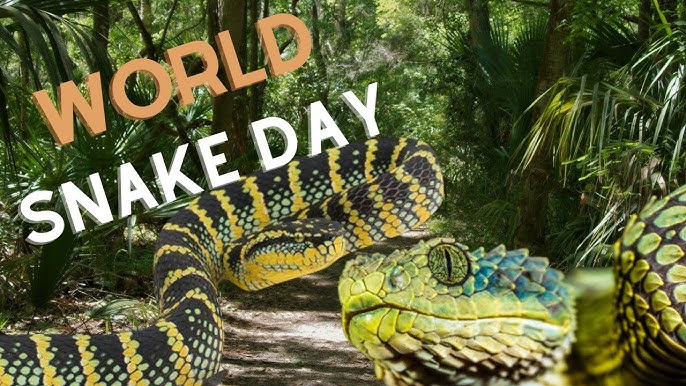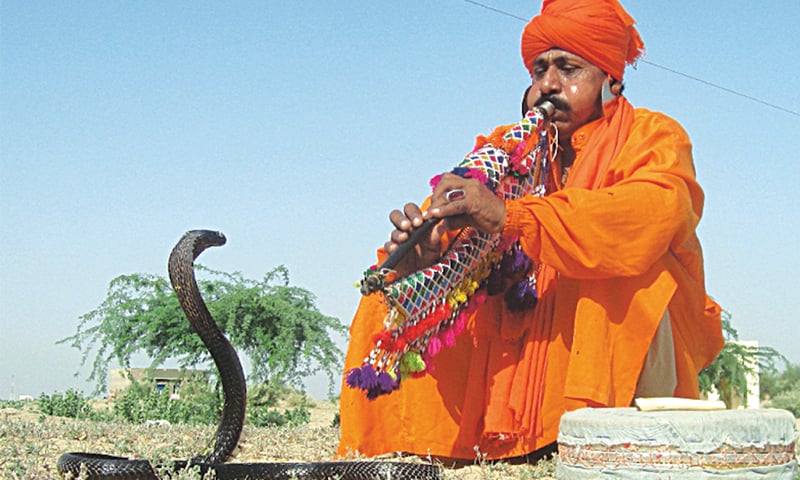Today, 16 July, marks World Snake Day, a day dedicated not to fear but to understanding one of nature’s most ancient and misunderstood creatures — the snake. In Pakistan, snakes are often viewed with suspicion, fear, or hostility. From villages to cities, the sight of a snake is met with shouts, stones, or sticks — not science or sympathy.
But what if we told you that the snake, this quiet, limbless being, is not our enemy — but our ecological ally, our natural protector, and even a source of healing?
This World Snake Day, let’s change the narrative.
🐍 The Pakistani Landscape and Its Hidden Residents

From the sandy deserts of Thar to the lush forests of Swat, from Sindh’s riverbanks to the mountains of Balochistan, snakes reptile thrives across Pakistan. The country is home to more than 80 different species, including both non-venomous types and a few that carry potent toxins — such as kraits, vipers, and cobras.
While some of them pose a danger if provoked, most are harmless and tend to avoid human contact. Unfortunately, due to lack of awareness and deep-rooted cultural fears, even the harmless ones are not spared.
⚗️ Venom: A Tool for Healing
One of the biggest reasons behind public fear is venom. But modern science is proving that this same substance has life-saving potential.
In international medicine, toxic compounds extracted from these reptiles are being used to develop treatments for:
- High blood pressure
- Heart disease
- Cancer
- Chronic pain
Pakistan has yet to tap into this powerful pharmaceutical resource. With better research and investment, our native species could play a role in global drug development, just as some have already contributed in other countries.
🐁 Snakes: Agriculture’s Silent Helper
In rural Pakistan, where the majority of the population is involved in farming, these creatures play a crucial role in pest control. Feeding primarily on rats, mice, and crop-damaging insects, they serve as nature’s own pesticide.
Sadly, in most villages, these animals are met with hostility instead of appreciation. Few farmers realize that by killing them, they are inviting rodent infestations and crop loss, leading to greater reliance on chemical solutions that harm soil and water health.
🧙♂️ The Influence of Myths and Superstitions
In many regions of Pakistan, especially in remote areas, stories about snakes are passed down generations:
- Some believe they guard hidden treasures.
- Others think they can take revenge or transform into humans (the naagin myth).
- Dreaming of one is often seen as a bad omen.
These myths are further reinforced by television dramas and films, where they are often portrayed as cunning, evil, or mystical beings. Such depictions may be entertaining but have a dangerous impact: they create irrational fear and justify violent responses.
🎬 From Screen to Streets: How Media Shapes Perception
Pakistani media hasn’t done justice to these reptiles either. Whether it’s horror shows or “naagin” serials, these animals are shown as shapeshifters, killers, or revenge-seeking spirits. This portrayal not only distorts reality but also deepens misconceptions that make coexistence nearly impossible.
In truth, these reptiles do not chase humans, do not plot revenge, and bite only when they feel threatened.
🧘 Symbols of Healing, Not Harm
Across many cultures, including our own, these creatures are seen as symbols of transformation, protection, and healing.
- In Unani medicine, extracts were once used for treating pain and inflammation.
- In Religious tradition, stories about the encounters with animals often promote compassion, not cruelty.
- Globally, the Rod of Asclepius — a serpent wrapped around a staff — remains the universal symbol of medicine.
It’s ironic that an animal long associated with healing is now hunted so mercilessly in our country.
🩸 The Silent Emergency: Snakebite in Pakistan
Pakistan sees thousands of bite cases each year, especially during summer and monsoon seasons when people sleep outdoors or walk barefoot in fields. Sadly:
- Antivenom is often outdated or unavailable.
- Victims turn to spiritual healers before medical care.
- Treatment centers are scarce in remote areas.
The World Health Organization considers venomous bites a neglected tropical disease — and Pakistan is no exception. We urgently need local production of modern antivenom, rural education programs, and emergency response units in high-risk districts.
🌱 Conservation: A Vanishing Presence

Due to deforestation, habitat loss, illegal capture for trade, and fear-driven killings, several native species are declining. Rare ones like the Balochistan dwarf viper or the Sindh sand boa are under threat.
Despite efforts by groups like WWF-Pakistan, reptiles don’t get the same attention as big cats or birds. And because they are not “cute” or marketable, they receive less funding and public sympathy.
But let’s not forget: ecological balance depends on them just as much.
🧠 What Can You Do?
Here’s how you can make a difference — whether you live in a city or a village:
- ✅ Don’t kill on sight — instead, call local wildlife authorities.
- ✅ Learn to identify venomous vs harmless species (many guides are now online).
- ✅ Educate your community, especially children and farmers.
- ✅ Support conservation groups working on reptile protection.
- ✅ Challenge myths wherever you hear them.
🔍 Lessons from the Wild
This fascinating creature teaches us more than we realize:
- 🌿 Adaptability: From deserts to forests, it survives everywhere.
- 🧘 Transformation: It sheds its skin, reminding us of renewal.
- 🩺 Balance: It strikes only when necessary — not for sport.
- 💭 Perception: Just because something looks dangerous, doesn’t mean it is.
🔚 Final Thought: Rethinking an Ancient Lifeform
On World Snake Day, let’s remember: snakes are not villains in our stories — they are vital characters in the grand play of nature. They are hunters, healers, symbols, and survivors.
So, the next time you see a snake, don’t reach for a stick. Reach for understanding.
Because sometimes, the most misunderstood creatures have the most to teach us.



